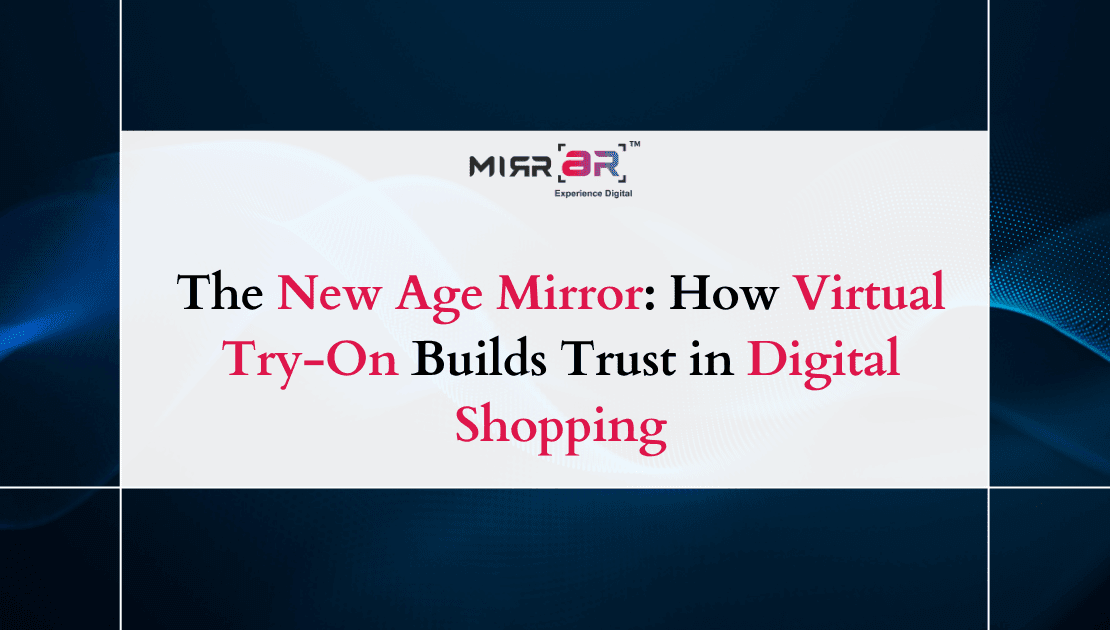
In the digital age, convenience rules—but trust remains the biggest challenge. While online shopping has revolutionized how people discover and purchase products, one concern continues to hold back buyers: the uncertainty of how a product will actually look or fit in real life. Photos can be misleading, sizing can vary, and colors can appear different on screens. This gap between imagination and reality often makes customers hesitate.
Enter the New Age Mirror—Virtual Try-On (VTO) technology. What was once a futuristic concept has now become one of the most powerful trust-building tools in digital commerce. With VTO, shoppers can see themselves wearing a pair of sunglasses, trying a lipstick shade, or donning an outfit—all through their devices. It’s no longer guesswork; it’s a personal, immersive experience that bridges the gap between physical and virtual retail.
The Trust Gap in Online Shopping
Trust is the foundation of every purchase decision. In traditional retail, this trust comes naturally—customers can touch, try, and compare products before buying. But online, that sensory experience is lost. Even with detailed product photos and reviews, uncertainty lingers.
This hesitation leads to abandoned carts, high return rates, and missed sales opportunities. According to multiple retail studies, over 60% of shoppers cite the inability to try before buying as their top reason for not completing online purchases. It’s not a lack of interest—it’s a lack of confidence.
That’s where Virtual Try-On technology changes the game.
Virtual Try-On: Redefining the Digital Experience
Virtual Try-On (VTO) allows customers to digitally experience products in real time using augmented reality (AR). It simulates how an item—be it fashion apparel, accessories, or makeup—would look on the user, directly through a smartphone or desktop camera.
For instance, with platforms like Mirrar, shoppers can instantly try jewelry, sunglasses, or cosmetics using their live image. The technology overlays virtual products onto the user’s face or body, creating a mirror-like reflection that’s interactive, realistic, and responsive.
This “digital mirror” effect transforms online shopping from a passive browsing activity into an active, personalized journey—one where the customer feels in control.
Building Confidence Through Visualization
Visualization is key to building trust. When customers can see a product on themselves, they’re no longer imagining—they’re experiencing. This emotional shift is what makes VTO so powerful.
For example, when a shopper virtually tries a necklace and sees how it complements their skin tone or outfit, they move from uncertainty to conviction. Similarly, when a beauty shopper experiments with lipstick shades through AR, they find their perfect match without stepping into a store.
This confidence leads to higher engagement and conversion. In fact, brands using Virtual Try-On solutions have reported conversion rates up to 200% higher compared to traditional product displays. That’s because VTO removes doubt and adds emotional satisfaction to the buying journey.
Reducing Returns and Building Long-Term Loyalty
One of the hidden costs of e-commerce is product returns. Customers often return items that don’t meet expectations—wrong fit, color mismatch, or appearance difference. These returns not only erode profit margins but also damage brand credibility.
Virtual Try-On acts as a pre-purchase filter, ensuring customers make more accurate choices. When people can visualize themselves with the product, they’re more likely to be satisfied post-purchase. This naturally reduces return rates and builds brand loyalty through consistent satisfaction.
Moreover, when customers realize that a brand is investing in their shopping experience—making it more reliable and immersive—they perceive it as innovative and customer-centric. Trust grows, not from words, but from experience.
Personalization: The Trust Multiplier
VTO technology isn’t just about visualization—it’s about personalization. Every shopper is unique, and personalization drives emotional connection.
When customers interact with a Virtual Try-On experience, they feel that the brand understands them. By combining VTO with AI-driven recommendations, brands can suggest styles, colors, or fits tailored to each individual. This hyper-personalized approach makes online shopping feel as attentive as a personal stylist in a boutique.
As shoppers see that products are being shown “for them,” trust transforms into loyalty. It’s no longer a transaction—it’s a relationship.
The Emotional Connection: Seeing Is Believing
Humans trust what they see. The mirror has always been a powerful tool of validation—people believe their reflection more than any description. The New Age Mirror powered by Virtual Try-On extends this psychological comfort into digital spaces.
It satisfies the innate human need for visual assurance and self-recognition. Seeing oneself with the product evokes confidence, excitement, and curiosity—all emotions that strengthen purchase intent. This emotional bond is what turns one-time buyers into long-term brand advocates.
The Future of Trust in E-Commerce
As digital commerce evolves, trust will no longer depend on reviews or return policies—but on immersive technology. Shoppers will expect every online brand to offer some form of virtual visualization before purchase.
Virtual Try-On will become the new standard for product interaction. Just as online reviews became essential in the 2010s, interactive experiences like VTO will define e-commerce credibility in the 2020s and beyond.
For forward-thinking brands, adopting VTO isn’t just about keeping up—it’s about leading the transformation of digital trust. Platforms like Mirrar are already showing how technology can turn hesitation into confidence and clicks into connections.
Conclusion: The Mirror That Builds Belief
The Virtual Try-On experience represents more than just innovation—it’s a return to human intuition. It gives digital shoppers the same comfort they find in a fitting room mirror, now powered by technology and creativity.
In this new era, the mirror isn’t just a reflection—it’s a trust builder, decision maker, and confidence booster. As VTO continues to evolve, it’s redefining the future of retail, one reflection at a time.
For shoppers, it’s reassurance. For brands, it’s loyalty. And for the digital world, it’s the beginning of a new age of trust in commerce.
